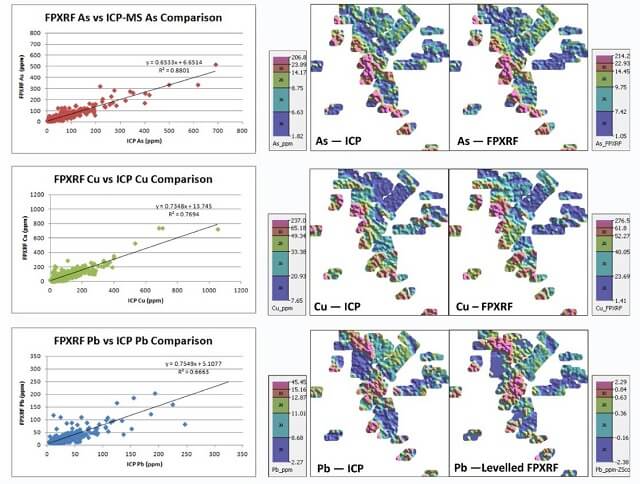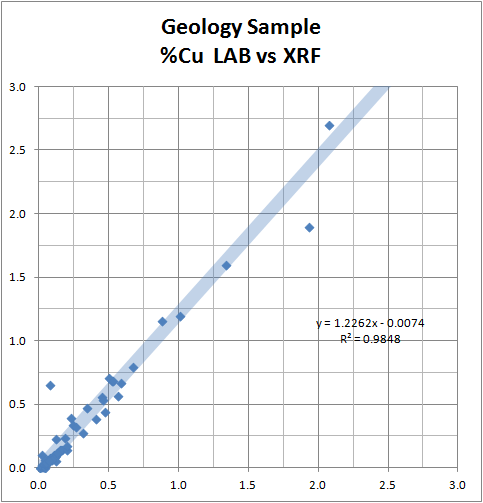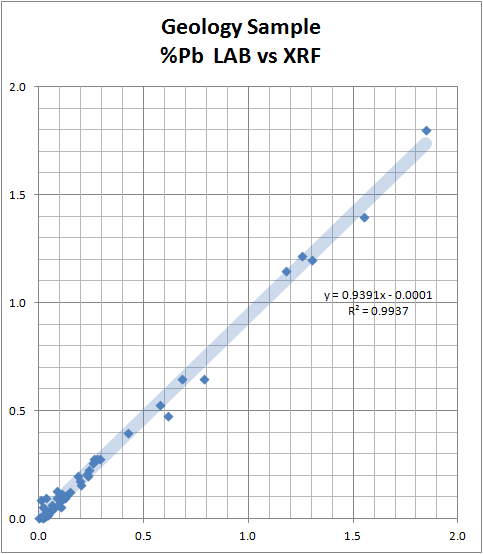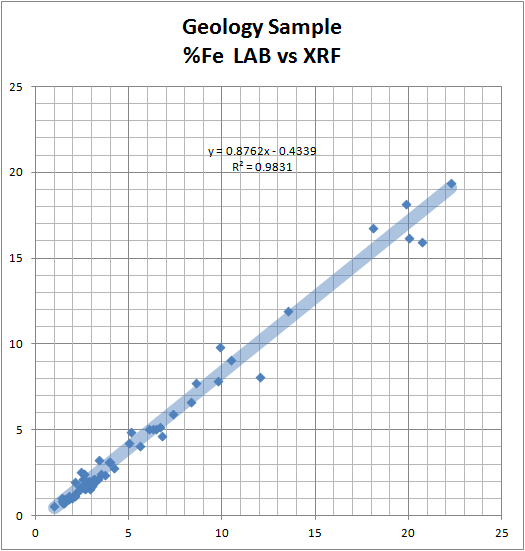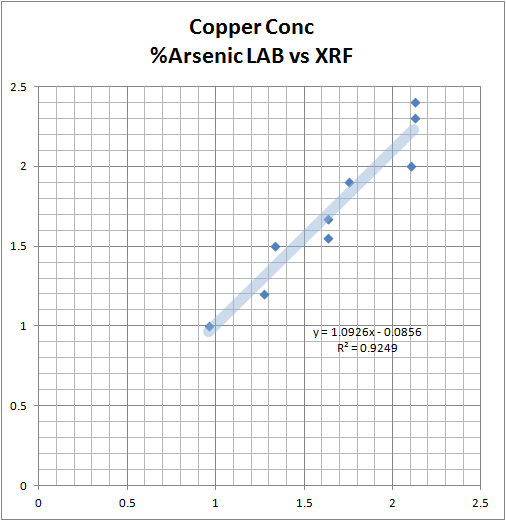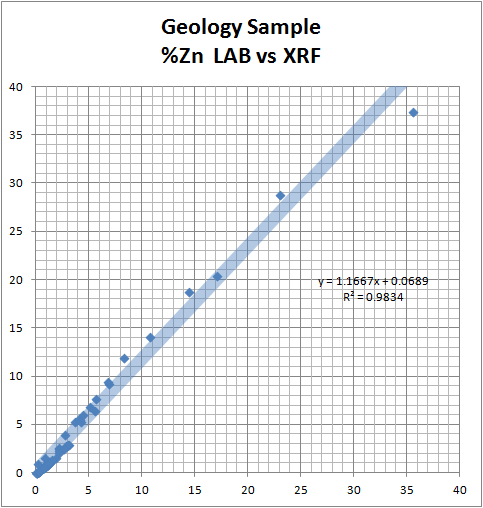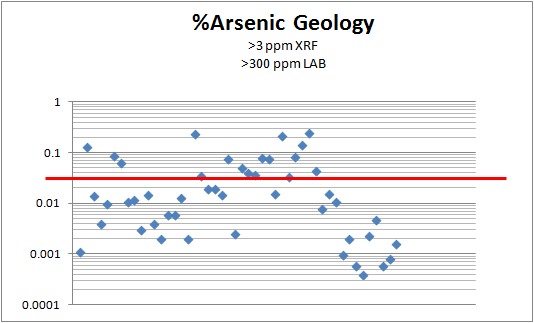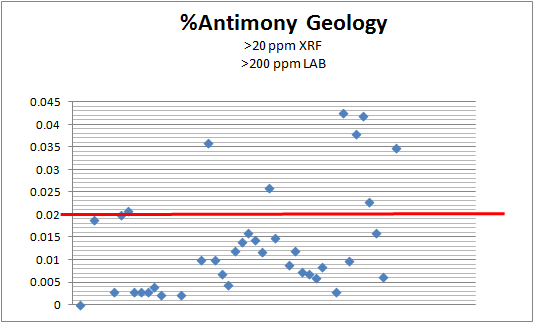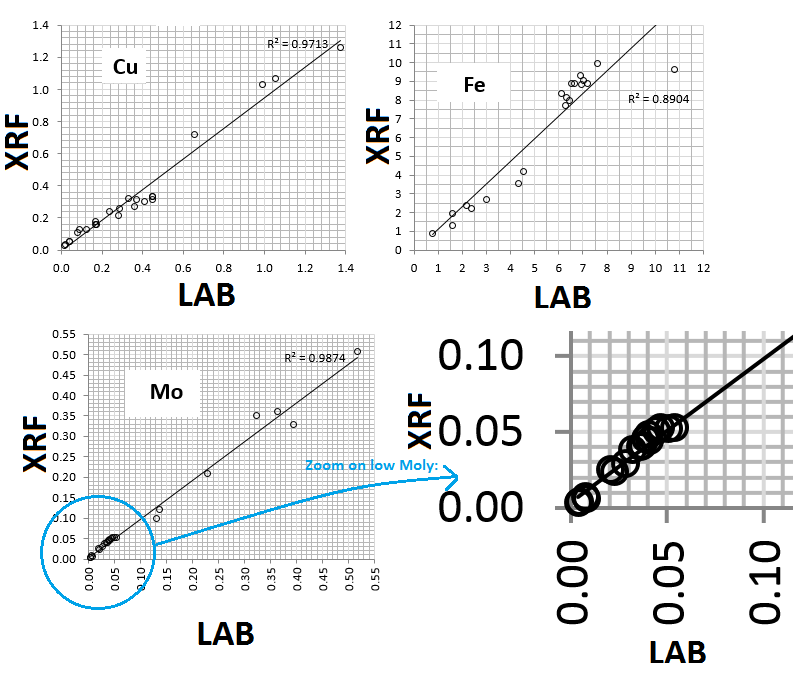If you run a standard assay laboratory analysis you might wonder if an XRF Spectrometer could provide enough precision or accuracy on some of your less important samples (production geology for example). What about an XRF vs AA comparison? What is an XRF’s Measurement Reliability & how does an X-Ray/XRF compare to a laboratory?
I once ran a test on a lab where 1100 out of 1600 Samples processed by the Assay Lab are Geology driven and 5300 out of 7600 AA reading performed by the Assay Lab are Geology driven to determine Base Metal Content.
The metal’s elements of analytical interest were:
Cu, Pb, Zn, Fe, As, Sb: (Copper, Lead, Zinc, Pyrite, Arsenic and Antimony).
An alternative to alleviate the Lab’s workload is to utilize the OLYMPUS X-5000 XRF
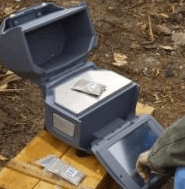
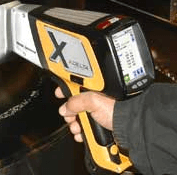 The OLYMPUS X-5000 is proven to be fast and accurate for Analyzing for all Elements needed by Geology and many Flotation Concentrator samples.
The OLYMPUS X-5000 is proven to be fast and accurate for Analyzing for all Elements needed by Geology and many Flotation Concentrator samples.
Once the sample is pulverized and ready to assay by the Lab, the X-5000 can read up to 30 elements in 50 seconds “at no costs” while the Lab will take Hours.
The X-5000 is able to reliably detect lower concentrations of As and Sb to help better model Geology.
Comparative tests were performed without any calibration and only using the “Factory Models” of a DELTA Premium. The Models used are called “Soil” and “Mining Plus”.
The XRF Spectrometer OLYMPUS DELTA Premium is the Portable version of the Desktop OLYMPUS X-5000.
Laboratory Pellet Press
CONCLUSION
The results of either X-Ray, the OLYMPUS DELTA Premium VS OLYMPUS X-5000 can be considered identical (their inner technologies are the same).
The OLYMPUS X-5000 is proven to be fast and accurate for Analyzing for all Elements needed by Geology and many Concentrator samples.
An XRF Spectrometer could be relocated to the Assay Lab to improve assay turnaround of mine/geology samples.
If you need more on this topic you can see this fancy study on How Reliable is X-Ray Fluorescence (XRF) Measurement for Different Metals in Soil Contamination and Compare XRF Brands.
Later on, I ran another comparative study between my XRF Gun and a mine ‘wet assay lab’. The samples being analyzed for these ore types are low grade Cu/Mo. Too me, this is very solid data telling you that for geology samples where the shovel is waiting for the assay lab: moved on, no need. The wait is unnecessary, an XRF can assay so many elements, get a used or new XRF and get producing.
